- Choosing the Right Seeds
- Preparing Seed Trays
- Sowing Seeds Properly
- 1. Choosing the Right Time
- 2. Prepare the Soil
- 3. Sow the Seeds
- 4. Provide Proper Lighting
- 5. Watering and Care
- 6. Transplanting Seedlings
- 7. Final Tips
- Providing Optimal Growing Conditions
- 1. Light
- 2. Temperature
- 3. Soil
- 4. Watering
- 5. Fertilizer
- 6. Protection
- Watering Seedlings Correctly
- 1. Check soil moisture:
- 2. Water at the base:
- 3. Use a watering can or gentle spray:
- 4. Water deeply but infrequently:
- 5. Avoid waterlogging:
- 6. Adjust watering based on weather:
- 7. Monitor seedling response:
- Feeding the Seedlings
- 1. Choosing the Right Fertilizer
- 2. Applying Fertilizer
- 3. Regular Feeding Schedule
- 4. Slow-Release Fertilizer
- 5. Organic Alternatives
- 6. Mulching
- Protecting Seedlings from Pests
- 1. Inspect the seedlings regularly
- 2. Remove pests manually
- 3. Use organic pest control methods
- 4. Provide physical barriers
- 5. Use companion planting
- 6. Maintain proper hygiene
- 7. Monitor moisture levels
- 8. Encourage beneficial insects
- Transplanting Seedlings Outdoors
- Questions and Answers:
- How long does it take for stock-rose seeds to germinate?
- What is the best time to sow stock-rose seeds?
- Should I soak stock-rose seeds before sowing?
- Can I sow stock-rose seeds directly in the ground?
- How often should I water stock-rose seedlings?
- Videos: Growing Stock as a Cut Flower : My 2023 Varieties, Collecting Seeds and My Methods! Flower Hill Farm
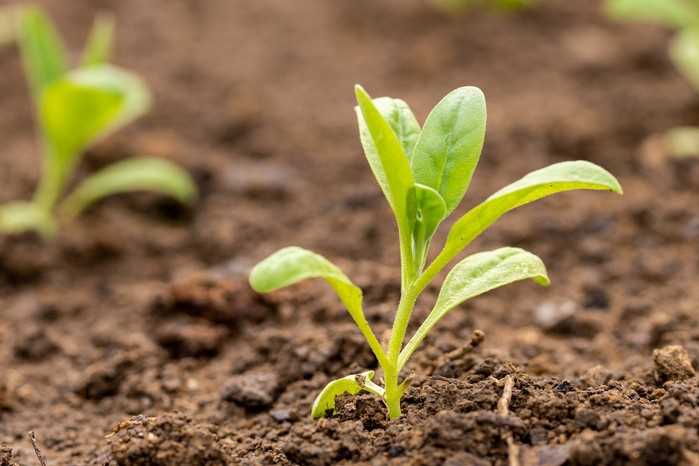
Stock-rose, also known as Alcea, is a beautiful flowering plant that can add color and height to your garden. If you want to enjoy the vibrant blooms of stock-rose in your garden, starting the seedlings from seeds is a great option. Sowing stock-rose seeds is a straightforward process, and by following a few simple steps, you can have healthy seedlings ready for transplanting.
First, choose a sunny location in your garden where you want to grow your stock-rose seedlings. Stock-rose thrives in full sun and well-draining soil. Prepare the soil by removing any weeds, rocks, or debris and add organic matter to improve fertility. It’s also a good idea to loosen the soil to ensure good root development.
Next, sow the stock-rose seeds directly into the soil. Make sure to space the seeds according to the packet instructions, as some varieties may require more space than others. Dig small holes, about 1/4 inch deep, and place each seed in the hole. Cover the seeds with soil and gently press down to secure them.
Water the newly sown seedlings thoroughly but gently to ensure that the soil is evenly moist. Avoid overwatering, as excess moisture can cause rotting. Provide regular waterings to keep the soil consistently moist until the seedlings emerge. Once the seedlings are about 2 inches tall, thin them out to ensure optimal growth and airflow between plants.
With proper care and attention, your stock-rose seedlings will soon grow into healthy plants ready for transplanting into your garden. Enjoy the stunning blooms of stock-rose and watch as these beautiful flowers bring life and color to your outdoor space.
Choosing the Right Seeds
Choosing the right seeds is crucial for successfully growing stock-rose seedlings. Here are some factors to consider when selecting your seeds:
- Variety: There are different varieties of stock-rose available, each with its own unique characteristics. Consider factors such as flower color, size, and growth habit to choose a variety that suits your preferences.
- Seed Quality: It is important to choose seeds that are of high quality. Look for seeds that are fresh, undamaged, and free from diseases or pests. Purchasing seeds from reputable suppliers can help ensure quality.
- Germination Rate: Check the germination rate of the seeds before buying. This information is usually provided on the seed packet or in the product description. Higher germination rates indicate better chances of successful seedling establishment.
- Growing Conditions: Consider the specific growing conditions required by the stock-rose variety you are interested in. Some varieties may have specific temperature, light, or soil requirements. Make sure your growing conditions match the needs of the seeds you choose.
By carefully selecting the right seeds, you can increase your chances of successfully growing healthy stock-rose seedlings.
Preparing Seed Trays
Before sowing the stock-rose seeds, it is important to properly prepare the seed trays to provide the optimal growing conditions for the seedlings. Here are the steps to prepare the seed trays:
- Clean the Seed Trays: Start by cleaning the seed trays to remove any dirt or debris. This can be done by washing them with warm water and mild soap. Rinse thoroughly to ensure no soap residue is left behind.
- Sterilize the Seed Trays: After cleaning, it is important to sterilize the seed trays to prevent the growth of harmful pathogens. A simple way to sterilize is by soaking the trays in a solution of equal parts water and hydrogen peroxide for about 10 minutes. Rinse the trays thoroughly with clean water afterwards.
- Fill the Trays with Seed Starting Mix: Once the trays are clean and sterilized, fill them with a high-quality seed starting mix. This type of mix is lightweight, well-draining, and provides the necessary nutrients for the seedlings to thrive. Fill each cell of the tray with the seed starting mix, leaving about a 1/4 inch space from the top.
- Moisten the Seed Starting Mix: Before sowing the seeds, it is essential to moisten the seed starting mix. This can be done by pouring water into the tray bottom and allowing the mix to absorb the moisture. Avoid overwatering, as excessive moisture can lead to damping-off disease.
- Label the Trays: To keep track of the different seed varieties, it is important to label each tray. You can use plant labels or simply write the names of the seeds on a piece of tape and stick it to the tray.
By following these steps, you will ensure that your seed trays are clean, sterile, and ready for sowing the stock-rose seeds. This will provide the seedlings with the best chance for healthy growth.
Sowing Seeds Properly
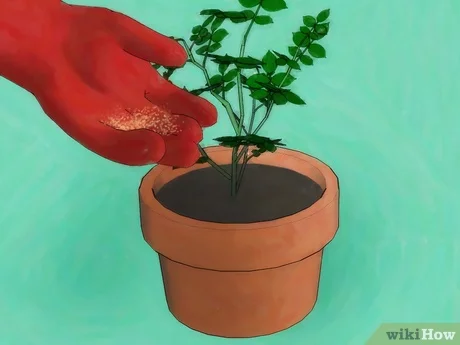

1. Choosing the Right Time
Before sowing stock-rose seeds, it is important to choose the right time for planting. Stock-rose seeds should be sown in early spring, around the time of the last frost. This ensures that the seedlings have enough time to grow and develop before the summer heat.
2. Prepare the Soil
Prepare the soil by removing any weeds or debris and loosening it with a garden fork or tiller. Stock-rose prefers well-draining soil, so adding organic matter such as compost or well-rotted manure can help improve the soil’s drainage.
3. Sow the Seeds
Prepare a seed tray or small pots by filling them with a good quality seed starting mix. Moisten the soil lightly before sowing the stock-rose seeds. Sow the seeds thinly and cover them with a thin layer of soil. Pat the soil gently to ensure good seed-to-soil contact.
4. Provide Proper Lighting
Stock-rose seeds require bright, indirect light for germination. Place the seed tray or pots in a well-lit area, such as a sunny window or under grow lights. Avoid direct sunlight, as it can cause the soil to dry out too quickly and inhibit seed germination.
5. Watering and Care
Keep the soil evenly moist but not waterlogged. Water the seeds using a fine mist sprayer or by bottom watering to avoid disturbing the seeds. Once the seedlings emerge, continue to water as needed to keep the soil moist but not waterlogged.
6. Transplanting Seedlings
When the stock-rose seedlings have developed their second set of true leaves, they can be transplanted into individual pots or into the garden. Harden off the seedlings by gradually exposing them to outdoor conditions for a week before transplanting.
7. Final Tips
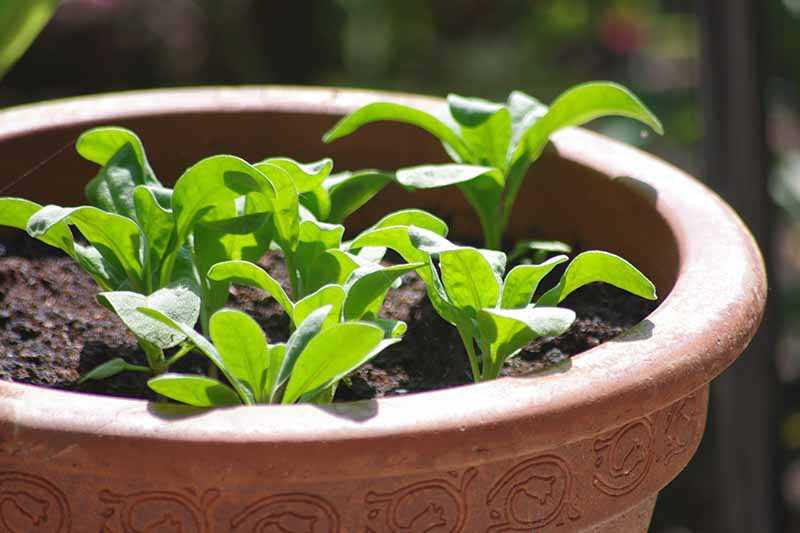

- Label your seed trays or pots to keep track of different varieties.
- Thin out the seedlings if they are overcrowded, leaving only the strongest ones.
- Protect seedlings from extreme temperatures or pests.
- Provide support for stock-rose plants as they grow taller.
- Enjoy the beautiful flowers that stock-rose will produce!
Providing Optimal Growing Conditions
The success of growing stock-rose seedlings heavily depends on providing them with optimal growing conditions. Here are a few key factors to consider:
1. Light
Stock-rose seedlings require full sun to thrive. Choose a sunny location in your garden or set up grow lights if you are growing them indoors. Ensure that the seedlings receive at least 6-8 hours of direct sunlight each day.
2. Temperature
Stock-rose seedlings prefer a moderately warm temperature range of 65-75°F (18-24°C). Keep them away from drafts and extreme temperature fluctuations. If growing indoors, use a heating mat to maintain the desired temperature.
3. Soil
Use well-draining soil with a pH level of 6.0-7.0. Good drainage is crucial for preventing waterlogged roots. Mix in some compost or organic matter to improve the soil’s fertility and moisture-retention capabilities.
4. Watering
Water the stock-rose seedlings moderately, keeping the soil consistently moist but not overly saturated. Avoid overwatering, as it can lead to root rot. Use a watering can or a gentle spray to moisten the soil evenly.
5. Fertilizer
Apply a balanced liquid fertilizer every two weeks, starting two weeks after germination. This will provide the seedlings with essential nutrients for healthy growth. Follow the instructions on the fertilizer packaging for the correct dilution ratio.
6. Protection
Protect the seedlings from strong winds and heavy rainfall, as they can damage or uproot the delicate young plants. Use stakes or cages to provide support and prevent them from bending or breaking. Consider using a lightweight row cover to shield the seedlings from pests.
By ensuring that your stock-rose seedlings have the right growing conditions, you can help them establish strong roots and thrive into beautiful flowering plants.
Watering Seedlings Correctly
Watering seedlings is a critical step in their growth and development. Proper watering techniques can help ensure strong, healthy plants. Here are some tips for watering your stock-rose seedlings:
1. Check soil moisture:
Before watering your seedlings, check the soil moisture level. Stick your finger about an inch into the soil to see if it feels dry. If the soil feels dry, it’s time to water.
2. Water at the base:
When watering seedlings, it’s important to avoid getting the foliage wet. Water at the base of the plant, allowing the water to soak into the soil and reach the roots.
3. Use a watering can or gentle spray:
For seedlings, it’s best to use a watering can or a gentle spray nozzle on a hose. This will help prevent overwatering and avoid disturbing the delicate seedlings.
4. Water deeply but infrequently:
Instead of watering lightly every day, it’s better to water deeply but less frequently. This encourages the seedlings to develop deep root systems, making them more resilient to drought conditions.
5. Avoid waterlogging:
While seedlings need regular watering, it’s crucial to avoid waterlogging the soil. Overwatering can lead to root rot and other diseases. Make sure the soil has proper drainage to prevent excess water from accumulating.
6. Adjust watering based on weather:
The watering needs of your seedlings may vary depending on the weather. During hot and dry periods, you may need to water more frequently. Conversely, during cool and rainy periods, you may need to water less often.
7. Monitor seedling response:
Pay attention to how your seedlings respond to watering. If they start to wilt or show signs of overwatering (such as yellowing leaves or mold), adjust your watering routine accordingly.
By following these watering guidelines, you can provide your stock-rose seedlings with the right amount of water for optimal growth and health.
Feeding the Seedlings
Proper nutrition is important for healthy and vigorous stock-rose seedlings. Here are some tips for feeding your seedlings:
1. Choosing the Right Fertilizer
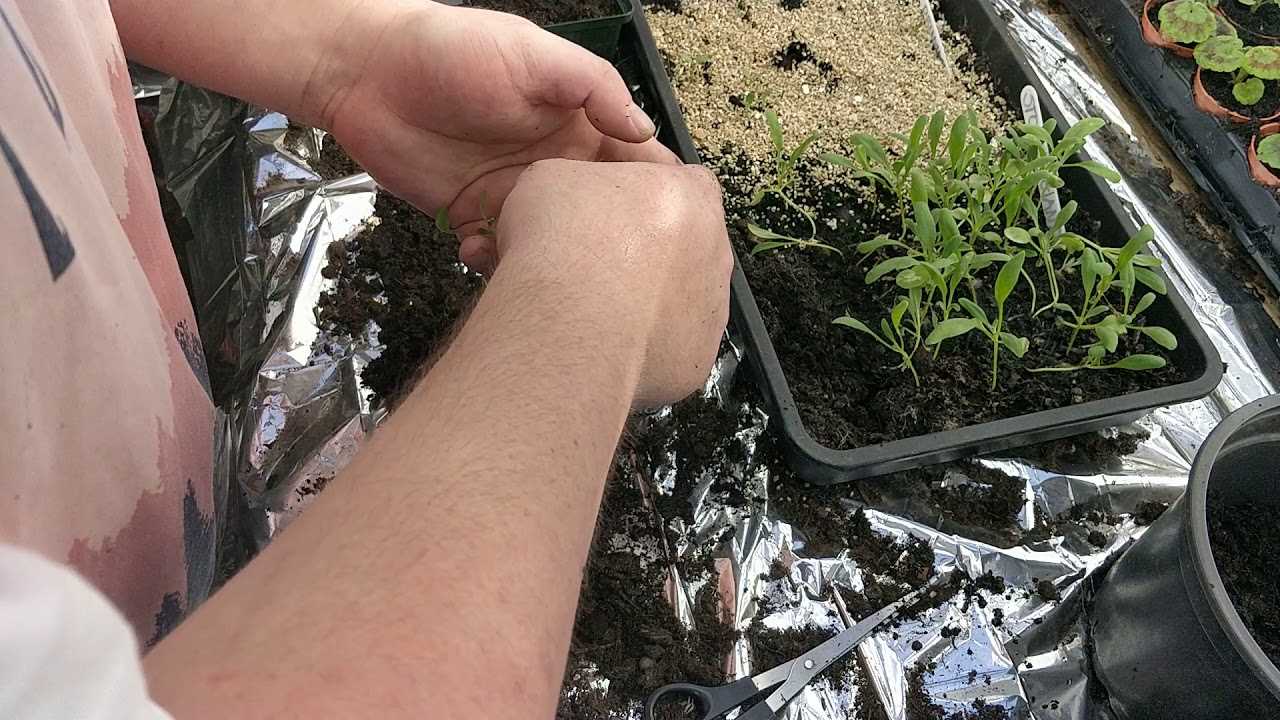

When it comes to fertilizing seedlings, it’s important to choose the right type of fertilizer. Look for a balanced fertilizer that contains equal amounts of nitrogen (N), phosphorus (P), and potassium (K). This will provide the seedlings with the essential nutrients they need for proper growth and development.
2. Applying Fertilizer
Apply fertilizer to the seedlings once they have developed their first true leaves. Use a diluted solution according to the package instructions to avoid burning the delicate roots. Water the seedlings thoroughly before applying the fertilizer to ensure it is evenly distributed.
3. Regular Feeding Schedule
Stock-rose seedlings should be fed regularly to promote healthy growth. Feed them every two weeks during the growing season. However, be careful not to over-fertilize, as this can cause nutrient imbalance and damage the seedlings.
4. Slow-Release Fertilizer
Consider using a slow-release fertilizer for your stock-rose seedlings. These types of fertilizers provide a steady supply of nutrients over a longer period, reducing the risk of over-fertilization. Follow the package instructions for application rates and frequency.
5. Organic Alternatives
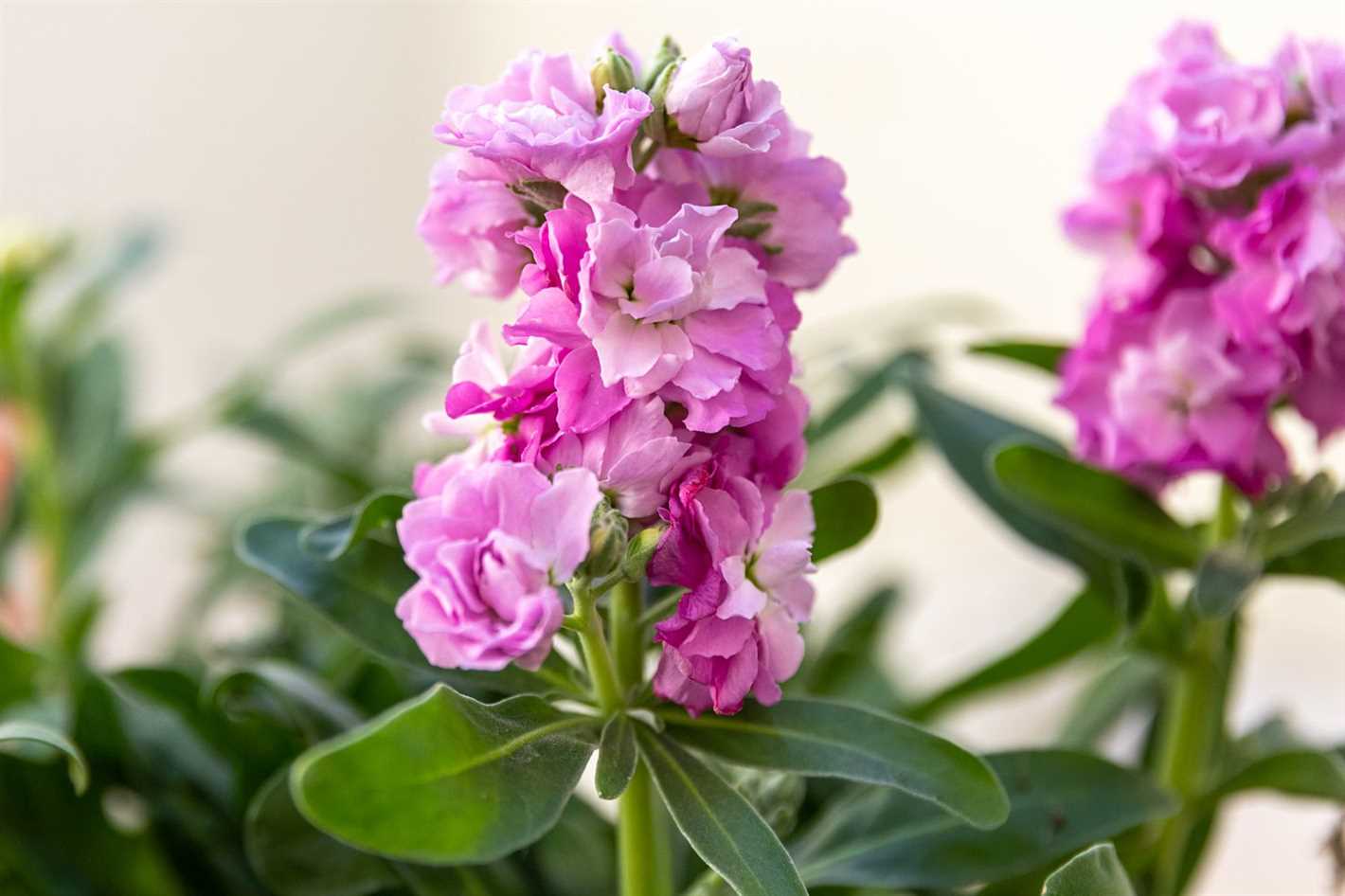

If you prefer to use organic fertilizers, there are several options available. Compost, worm castings, and well-rotted manure can be mixed into the soil before planting the seedlings. Additionally, organic liquid fertilizers made from seaweed or fish emulsion can be applied during the growing season.
6. Mulching
Applying a layer of organic mulch around the base of the seedlings can help retain moisture and nutrients in the soil. This can reduce the need for frequent fertilization and help create a more favorable growing environment for the seedlings.
Remember, proper feeding is just one aspect of stock-rose seedling care. Pay attention to other factors such as watering, light, and temperature to ensure the overall health and success of your seedlings.
Protecting Seedlings from Pests
When growing seedlings of stock-rose, it’s important to protect them from various pests that can cause damage. Here are some effective methods to keep your seedlings safe:
1. Inspect the seedlings regularly
Regularly inspect your seedlings for any signs of pest infestation. Look for chewed leaves, holes in the plants, or the presence of insects on the leaves or stems. Early detection is key to preventing a full-blown infestation.
2. Remove pests manually
If you spot any pests on your seedlings, remove them manually. Wear gloves to protect your hands and carefully pick off the insects. You can also use a soft brush or cloth to wipe off small pests.
3. Use organic pest control methods
Avoid using chemical pesticides on your seedlings, as they can be harmful to both the plants and the environment. Instead, opt for organic pest control methods. For example, you can make a natural insecticide by mixing water and a small amount of dish soap, then spraying it on the affected plants.
4. Provide physical barriers
Place physical barriers around your seedlings to prevent pests from accessing them. For example, you can use row covers or netting to keep insects and birds away from your plants. Be sure to secure the barriers tightly to prevent any gaps.
5. Use companion planting
Companion planting involves growing certain plants together to repel pests. For stock-rose seedlings, consider planting marigolds or nasturtiums nearby. These flowers have a strong scent that deters many common garden pests.
6. Maintain proper hygiene
Maintaining proper hygiene in your growing area can help prevent pest infestations. Remove any dead plant matter or debris regularly, as they can attract pests. Keep the area clean and tidy to minimize hiding spots for pests.
7. Monitor moisture levels
Pests, such as snails and slugs, are attracted to moist environments. Avoid overwatering your seedlings and ensure proper drainage to prevent water from pooling around the plants. This will help reduce the risk of pest infestation.
8. Encourage beneficial insects
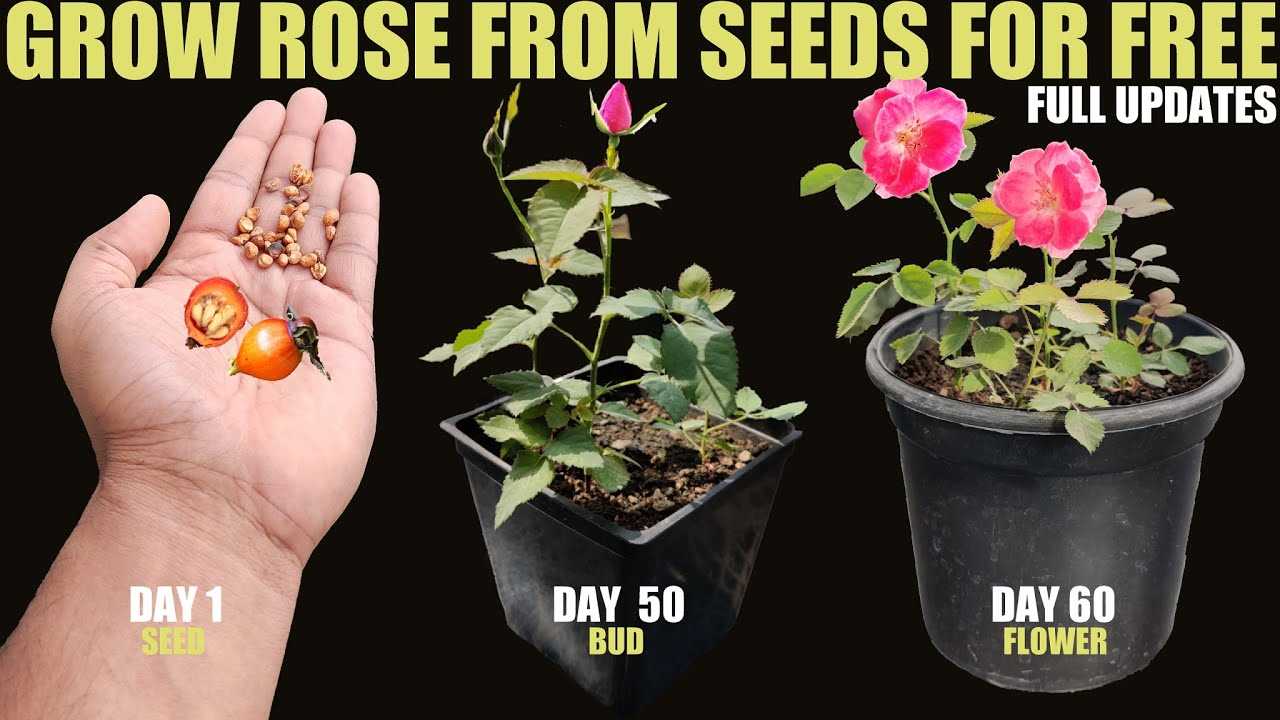

Not all insects are harmful to your seedlings. Encourage beneficial insects, such as ladybugs and lacewings, to visit your garden. These insects feed on pests and can help keep the population under control naturally. Planting flowers that attract these beneficial insects can help attract them to your garden.
By following these tips, you can protect your seedlings from pests and ensure their healthy growth. Remember to monitor your plants regularly and take proactive measures to address pest issues as soon as they arise.
Transplanting Seedlings Outdoors
Transplanting seedlings is an important step in the process of growing stock-rose. Once the seedlings reach a certain size and have developed a few true leaves, it’s time to move them from their pots to the outdoor garden.
Here is a step-by-step guide on how to transplant seedlings outdoors:
- Select a suitable location in your garden for the stock-rose seedlings. The area should receive full sun for at least 6 hours a day and have well-draining soil.
- Prepare the soil by removing any weeds and loosening it with a garden fork or tiller. Add organic matter like compost or well-rotted manure to improve the soil’s fertility and drainage.
- Water the seedlings thoroughly a few hours before transplanting to ensure they are well-hydrated.
- Dig a hole in the prepared soil that is slightly larger than the root ball of each seedling.
- Carefully remove the seedlings from their pots, gently teasing the roots if they are tightly bound. Be careful not to damage the delicate stems or leaves.
- Place each seedling in a planting hole, making sure the top of the root ball is level with the surrounding soil surface.
- Backfill the hole with soil, firming it gently around the seedling’s roots to eliminate any air pockets.
- Water the transplanted seedlings immediately and thoroughly to help settle the soil around the roots.
- Apply a layer of mulch around the base of each seedling to help conserve moisture and prevent weed growth.
- Monitor the transplanted seedlings regularly and provide water as needed to keep the soil evenly moist, especially during hot and dry periods.
Transplant shock can occur when seedlings are moved from a controlled indoor environment to the harsher outdoor conditions. To minimize transplant shock, it is recommended to transplant seedlings on a cloudy day or in the late afternoon to reduce stress from the sun’s heat.
Following these steps and providing proper care will help your stock-rose seedlings thrive in their new outdoor home and eventually reward you with beautiful flowers.
Questions and Answers:
How long does it take for stock-rose seeds to germinate?
Stock-rose seeds usually take 10-14 days to germinate.
What is the best time to sow stock-rose seeds?
The best time to sow stock-rose seeds is in early spring, around March or April.
Should I soak stock-rose seeds before sowing?
Soaking stock-rose seeds for 24 hours before sowing can help to speed up germination.
Can I sow stock-rose seeds directly in the ground?
Yes, you can sow stock-rose seeds directly in the ground if the soil is well-drained and the danger of frost has passed.
How often should I water stock-rose seedlings?
Stock-rose seedlings should be watered regularly, keeping the soil moist but not waterlogged.







